Houzz Tour: A Hillside Home Commands Attention and Views
Fayetteville is a college town (the University of Arkansas) in northwest Arkansas that benefits from the beautiful landscape of the Ozarks. Architects Tim de Noble and Time Maddox of deMx Architecture find inspiration in the natural context and indigenous structures of the area, crafting structures in a style they call vernacular modernism. A great example of this is the Round Mountain House, a strikingly expressive structure that commands the north side of a hill. Through its asymmetrical barn-like profile, standing-seam metal siding, breezeway, natural cooling system and barn-like loft, the house references but updates the area's historical architecture.
Houzz at a Glance
Who lives here: Empty nesters Sharon and Charles Killian
Location: Fayetteville, Arkansas
Size: 4,500 square feet; 3 bedrooms, 3 bathrooms
That's interesting: The house has a strange, almost alien form that starts to make sense once you're inside.
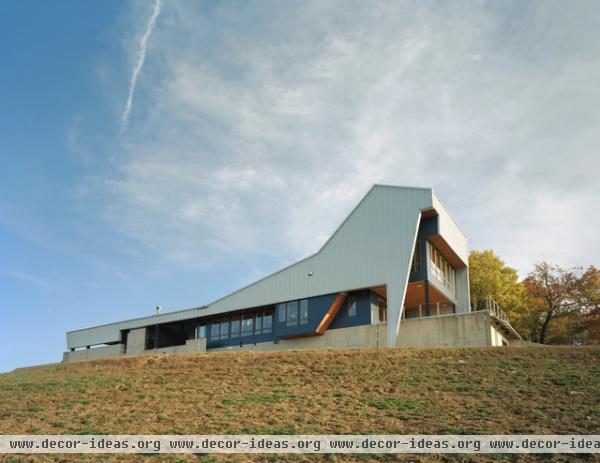
The house is a long bar that is oriented east–west along the hillside. Here we are looking at the long north side, and from here the house's construction is evident: concrete foundation, then a middle section covered in SIPs (structural insulated panels), both topped by an asymmetrical wrapper of standing-seam metal panels.
The form and construction indicate that the house is rooted in the industrial structures of the area yet is shaped as if it were reaching to the west for views.
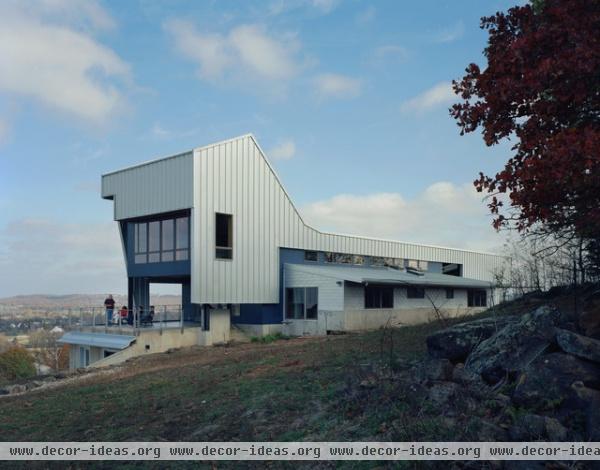
Looking at the south side of the house, we can get a better look at the patio that anchors the tall end of the house on the west. The one-story portion in the foreground houses the bedrooms, while the asymmetrical piece in metal wraps the living areas.
Note the horizontal strip of clerestory windows above the one-story bedroom; these bring light into the living area, something we'll see later.
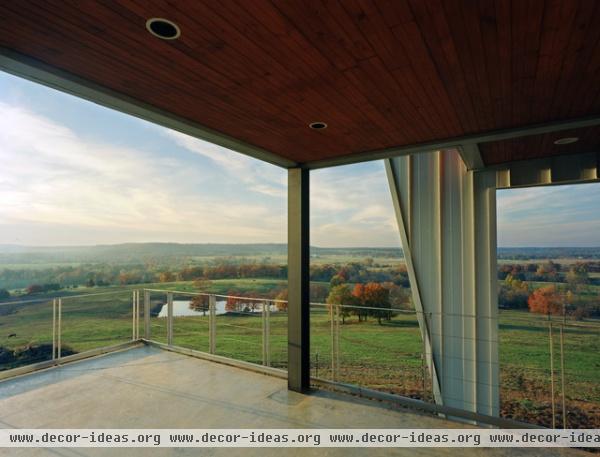
Here is the view from the porch on the west side of the house. Clearly this is the raison d'être for the house and its form.
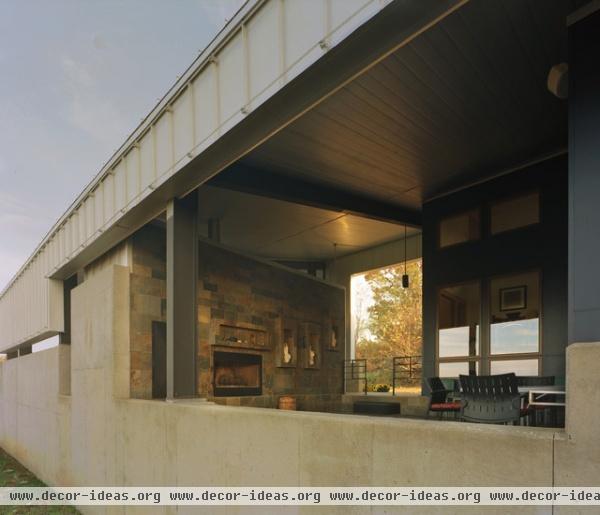
The garage is on the low, east end of the house. In between the garage and the house is a breezeway that serves as another outdoor space for the owners, the Killians. From here the house's unique steel structure is evident — we'll see how this allows for very open spaces inside.
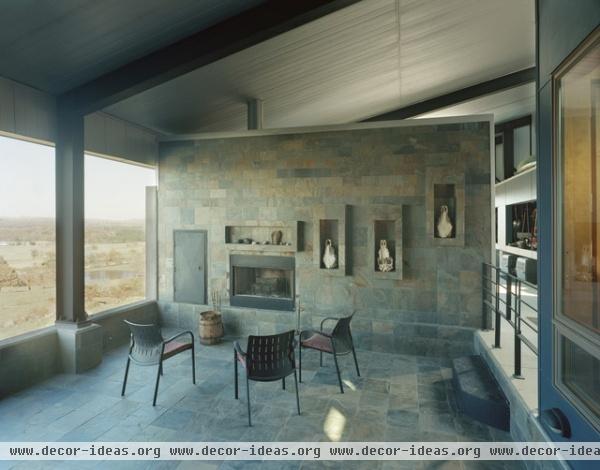
The breezeway is anchored by an outdoor fireplace in a stone wall that is punctuated by alcoves for displaying artifacts. The way the stone wraps the wall and the floor is a nice touch, something that gives the space cohesion.
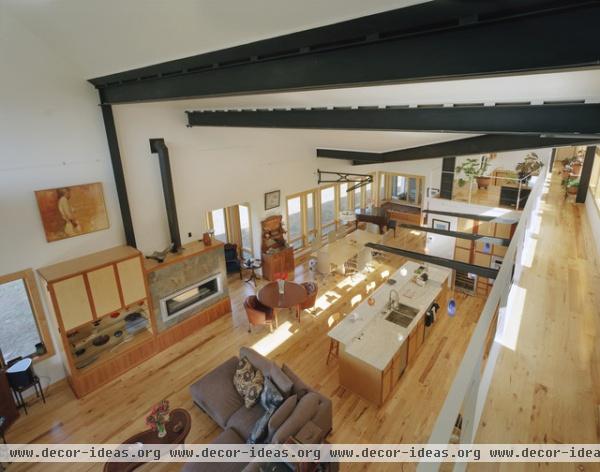
The living area is basically one large, open space with a loft at the tall end. Here we are looking from the loft to the east, from the living area below to the kitchen and dining room beyond. (You can find a floor plan here.) The steel beams mark the points of transition in the roof, as the form gets taller and taller.
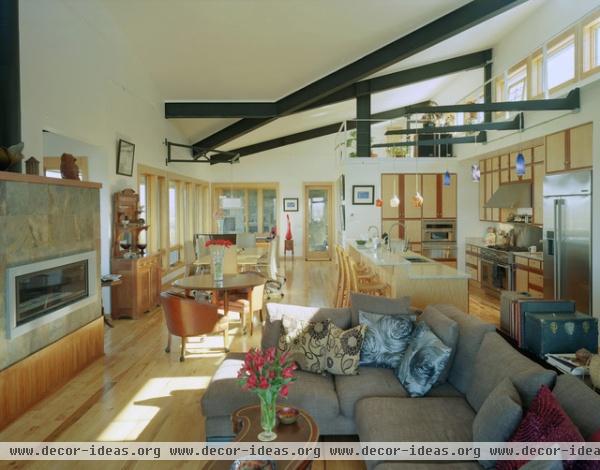
This view is looking in the same direction, from the living room back to the entrance on the east. From here a few interesting things are worth pointing out: The clerestory windows mentioned earlier are evident on the right side; the stone from the breezeway is picked up again on the wall of the fireplace in the living room; and the steel brackets supporting the lights over the dining room (with a movable bracket) and kitchen are a really nice design touch that picks up on the structural steel exposed throughout.
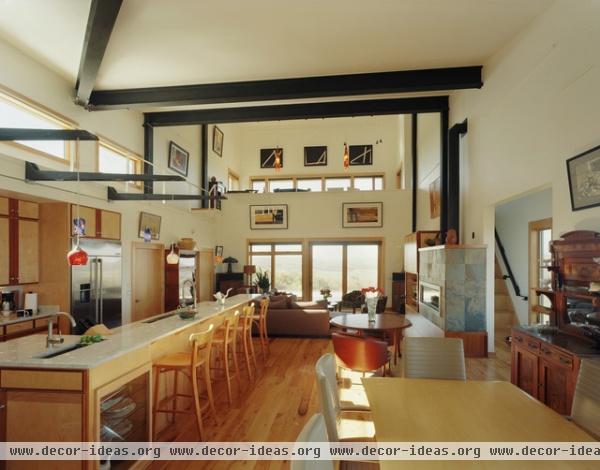
This last view of the house is looking west from the dining room table. Large windows and sliding doors capture views and provide access to the porch beyond. We can see the stairs on the right that lead to the wraparound loft. The loft on the far west side sits above the porch and has its own windows for looking at the sun setting over the hills in the distance.
The house's vernacular inspirations may fall away inside, but the connection to the landscape is always clear as an important part of life in the house.












